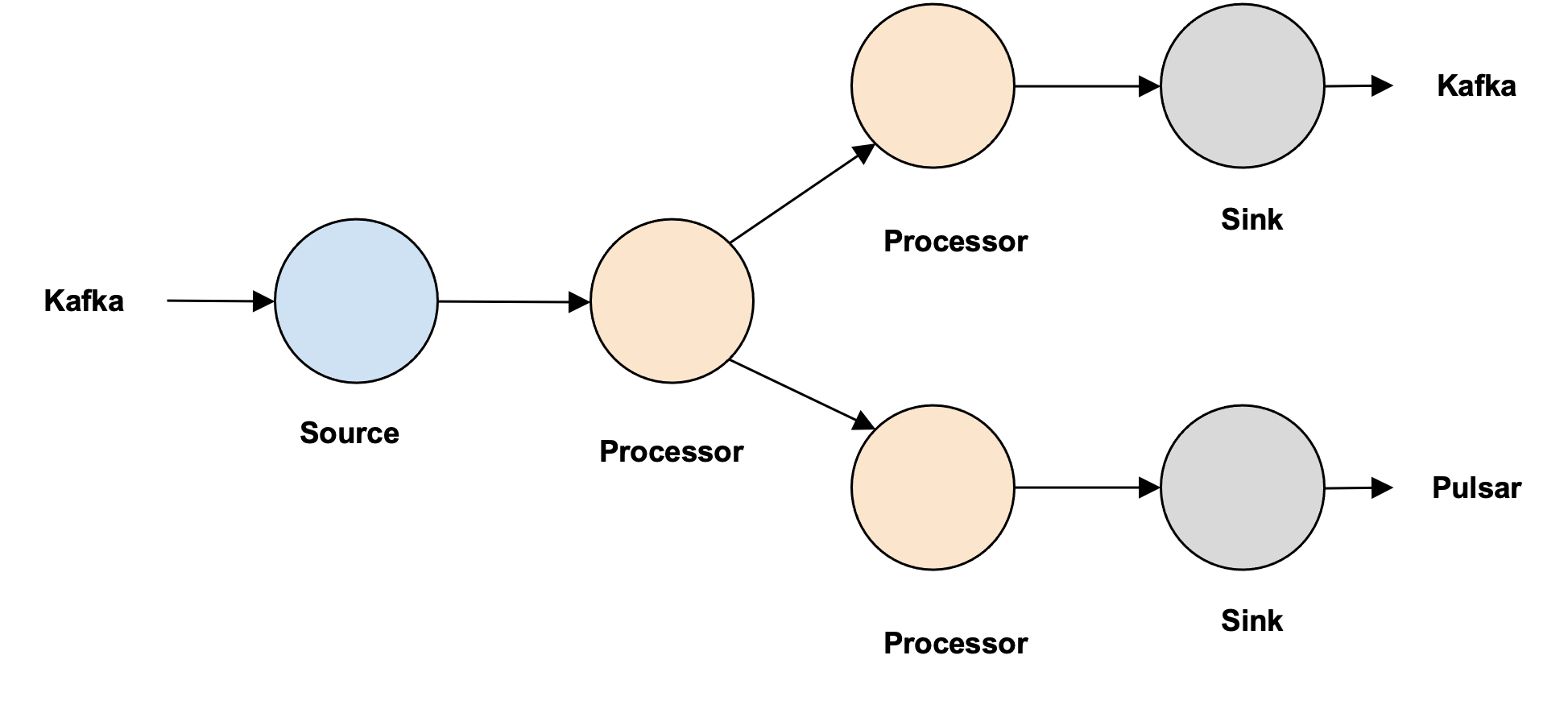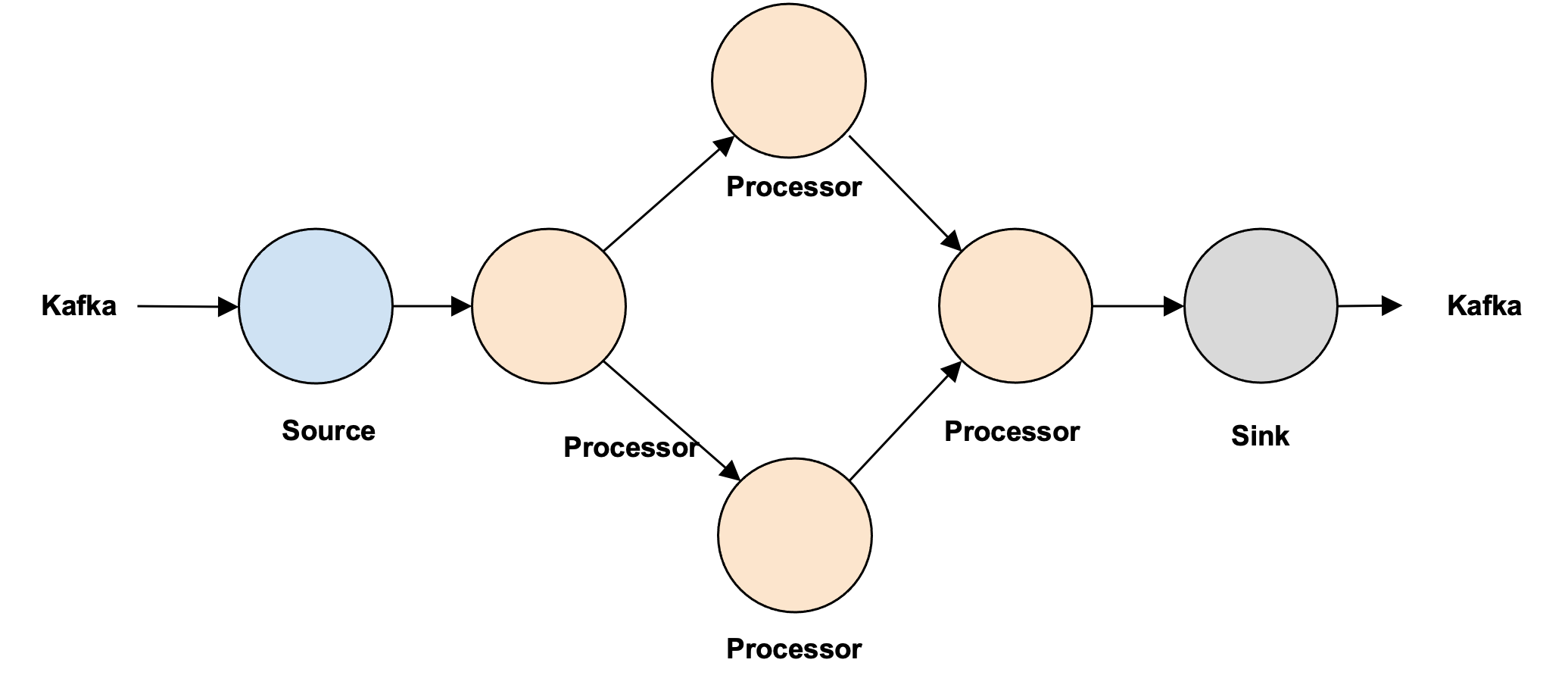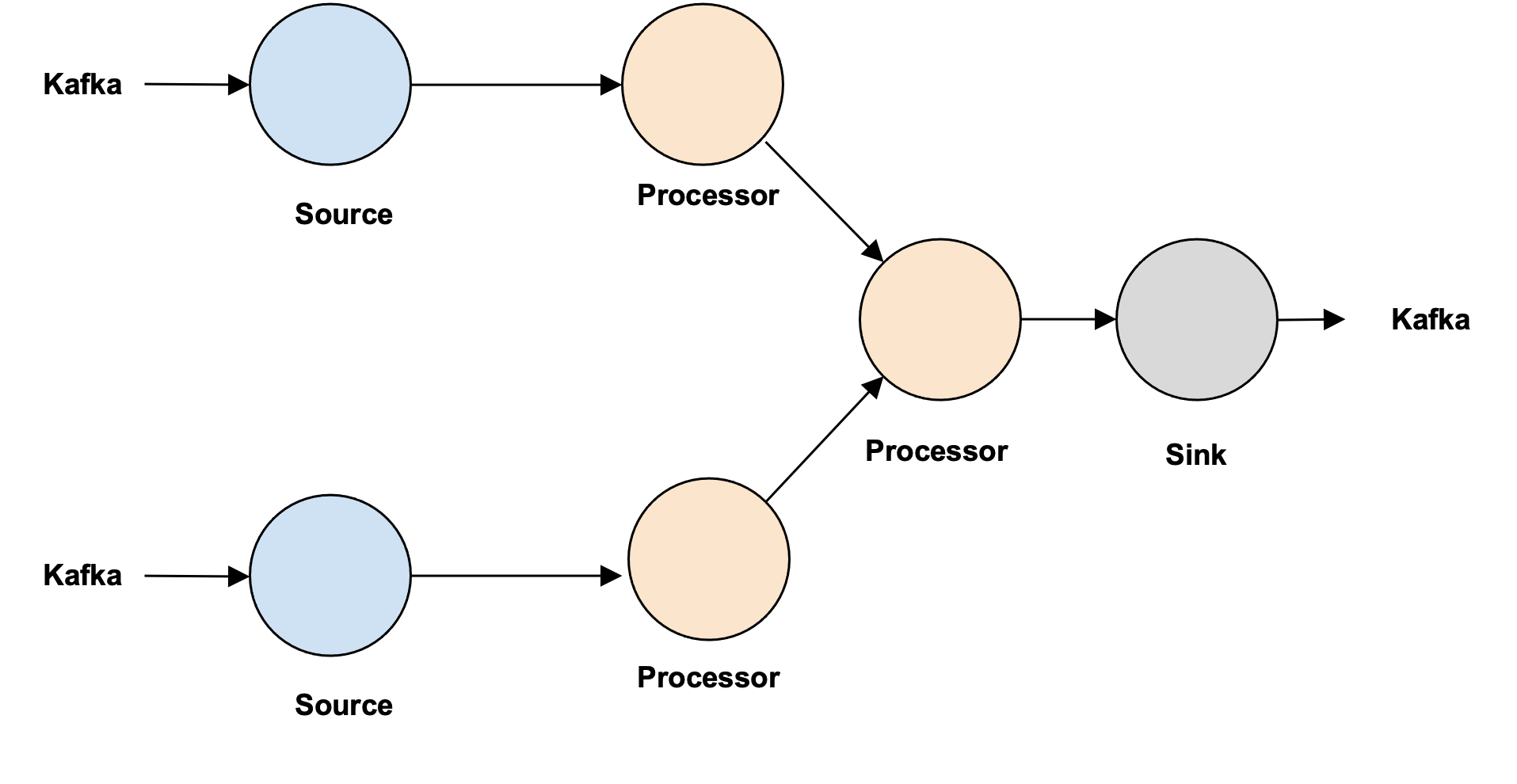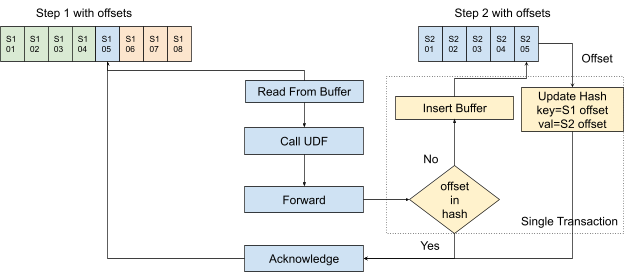Numaflow Dataplane High-Level Architecture¶
Synopsis¶
-
Numaflow allows developers without any special knowledge of data/stream processing to easily create massively parallel data/stream processing jobs using a programming language of their choice, with just basic knowledge of Kubernetes.
-
Reliable data processing is highly desirable and exactly-once semantics is often required by many data processing applications. This document describes the use cases, requirements, and design for providing exactly-once semantics with Numaflow.
Use Cases
-
Continuous stream processing for unbounded streams.
-
Efficient batch processing for bounded streams and data sets.
Definitions¶
Pipeline
A pipeline contains multiple processors, which include source processors, data processors, and sink processors. These processors are not connected directly, but through inter-step buffers.

Source
The actual source for the data (not a step in the Numaflow).
Sink
The actual sink for the data (not a step in the Numaflow).
Inter-Step Buffers
Inter-step buffers are used to connect processors and they should support the following
- Durability
- Support offsets
- Support transactions for Exactly-Once forwarding
- Concurrent operations (reader group)
- Ability to explicitly ack each data/offset
- Claim pending messages (read but never acknowledged)
- Ability to trim (buffer size controls)
- Fast (high throughput and low latency)
- Ability to query buffer information (observability)
Source Processors
Source processors are the initial processors that ingest data into the Numaflow. They sit in front of the first data processor, ingest the data from the data source, and forward to inter-step buffers.
Logic:
- Read data from the data source;
- Write to the inter-step buffer;
- Ack the data in the data source.
Data Processors
The data processors execute idempotent user-defined functions and will be sandwiched between source and sink processors. There could be one or more data processors.
A data processor only reads from one upstream buffer, but it might write to multiple downstream buffers.
Logic:
- Read data from the upstream inter-step buffer;
- Process data;
- Write to downstream inter-step buffers;
- Ack the data in the upstream buffer.
Sink Processors
Sink processors are the final processors used to write processed data to sinks.
A sink processor only reads from one upstream buffer and writes to a single sink.
Logic:
- Read data from the upstream inter-step buffer;
- Write to the sink;
- Ack the data in the upstream buffer.
UDF (User-defined Function)
- Use-defined Functions run in data processors.
- UDFs implements a unified interface to process data.
- UDFs are typically implemented by end-users, but there will be some built-in functions that can be used without writing any code.
- UDFs can be implemented in different languages, a pseudo-interface
might look like the below, where the function signatures include
step context and input payload and returns a result. The Result
contains the processed data as well as optional labels that will
be exposed to the DSL to do complex conditional forwarding.
Process(key, message, context) (result, err) - UDFs should only focus on user logic, buffer message reading and writing should not be handled by this function.
- UDFs should be idempotent.
Matrix of Operations
| Source | Processor | Sink | |
|---|---|---|---|
| ReadFromBuffer | Read From Source | Generic | Generic |
| CallUDF | Void | User Defined | Void |
| Forward | Generic | Generic | Write To Sink |
| Ack | Ack Source | Generic | Generic |
Requirements¶
- Exactly once semantics from the source processor to the sink processor.
- Be able to support a variety of data buffering technologies.
- Numaflow is restartable if aborted or steps fail while preserving exactly-once semantics.
- Do not generate more output than can be used by the next stage in a reasonable amount of time, i.e., the size of buffers between steps should be limited, (aka backpressure).
- User code should be isolated from offset management, restart, exactly once, backpressure, etc.
- Streaming process systems inherently require a concept of time, this time will be either derived from the Source (LOG_APPEND_TIME in Kafka, etc.) or will be inserted at ingestion time if the source doesn't provide it.
- Every processor is connected by an inter-step buffer.
- Source processors add a "header" to each "item" received from the source in order to:
- Uniquely identify the item for implementing exactly-once
- Uniquely identify the source of the message.
- Sink processors should avoid writing output for the same input when possible.
- Numaflow should support the following types of flows:
- Line

- Tree

- Diamond (In Future)

- Multiple Sources with the same schema (In Future)

Non-Requirements¶
- Support for non-idempotent data processors (UDFs?)
- Distributed transactions/checkpoints are not needed
Open Issues¶
- None
Closed Issues¶
- In order to be able to support various buffering technologies, we will persist and manage stream "offsets" rather than relying on the buffering technology (e.g., Kafka)
- Each processor may persist state associated with their processing no distributed transactions are needed for checkpointing
- If we have a tree DAG, how will we manage acknowledgments? We will use back-pressure and exactly-once schematics on the buffer to solve it.
- How/where will offsets be persisted? Buffer will have a "lookup - insert - update" as a txn
- What will be used to implement the inter-step buffers between processors? The interface is abstracted out, but internally we will use Redis Streams (supports streams, hash, txn)
Design Details¶
Duplicates¶
Numaflow (like any other stream processing engine) at its core has
Read -> Process -> Forward -> Acknowledge
loop for every message it has to process. Given that the user-defined process is idempotent, there are two failure mode scenarios where there could be duplicates.
- The message has been forwarded but the information failed to reach back (we do not know whether we really have successfully forwarded the message). A retry on forwarding again could lead to duplication.
- Acknowledgment has been sent back to the source buffer, but we do not know whether we have really acknowledged the successful processing of the message. A retry on reading could end up in duplications (both in processing and forwarding, but we need to worry only about forwarding because processing is idempotent).
To detect duplicates, make sure the delivery is Exactly-Once:
- A unique and immutable identifier for the message from the upstream buffer will be used as the key of the data in the downstream buffer
-
Best effort of the transactional commit.
-
Data processors make transactional commits for data forwarding to the next buffer, and upstream buffer acknowledgment.
-
Source processors have no way to do similar transactional operations for data source message acknowledgment and message forwarding, but #1 will make sure there's no duplicate after retrying in case of failure.
- Sink processors can not do transactional operations unless there's a contract between Numaflow and the sink, which is out of the scope of this doc. We will rely on the sink to implement this (eg, "enable.idempotent" in Kafka producer).
Unique Identifier for Message¶
To detect duplicates, we first need to uniquely identify each message. We will be relying on the "identifier" available (e.g., "offset" in Kafka) in the buffer to uniquely identify each message. If such an identifier is not available, we will be creating a unique identifier (sequence numbers are tough because there are multiple readers). We can use this unique identifier to ensure that we forward only if the message has not been forwarded yet. We will only look back for a fixed window of time since this is a stream processing application on an unbounded stream of data, and we do not have infinite resources.
The same offset will not be used across all the steps in Numaflow, but we will be using the current offset only while forwarding to the next step. Step N will use step N-1th offset to deduplicate. This requires each step to generate an unique ID. The reason we are not sticking to the original offset is because there will be operations in future which will require, say aggregations, where multiple messages will be grouped together and we will not be able to choose an offset from the original messages because the single output is based on multiple messages.

Restarting After a Failure¶
Numaflow needs to be able to recover from the failure of any step (pods) or even the complete failure of the Numaflow while preserving exactly-once semantics.
When a message is successfully processed by a processor, it should have been written to the downstream buffer, and its status in the upstream buffer becomes "Acknowledged". So when a processor restarts, it checks if any message assigned to it in the upstream buffer is in the "In-Flight" state, if yes, it will read and process those messages before picking up other messages. Processing those messages follows the flowchart above, which makes sure they will only be processed once.
Back Pressure¶
The durable buffers allocated to the processors are not infinite but have a bounded buffer. Backpressure handling in Numaflow utilizes the buffer.
At any time t, the durable buffer should contain messages in the following states:
- Acked messages - processed messages to be deleted
- Inflight messages - messages being handled by downstream processor
- Pending messages - messages to be read by the downstream processor

The buffer acts like a sliding window, new messages will always be written to the right, and there's some automation to clean up the acknowledged messages on the left. If the processor is too slow, the pending messages will buffer up, and the space available for writing will become limited. Every time (or periodically for better throughput) before the upstream processor writes a message to the buffer, it checks if there's any available space, or else it stops writing (or slows down the processing while approaching the buffer limit). This buffer pressure will then pass back to the beginning of the pipeline, which is the buffer used by the source processor so that the entire flow will stop (or slow down).